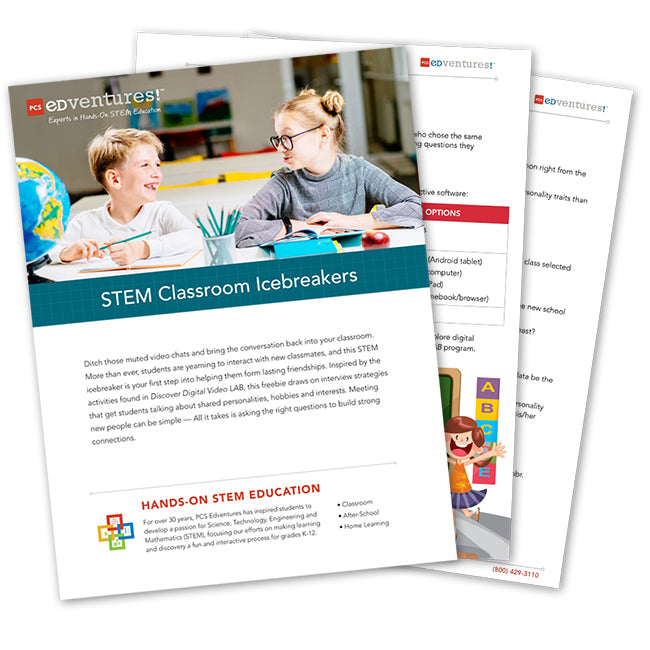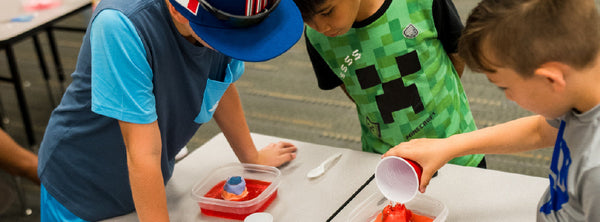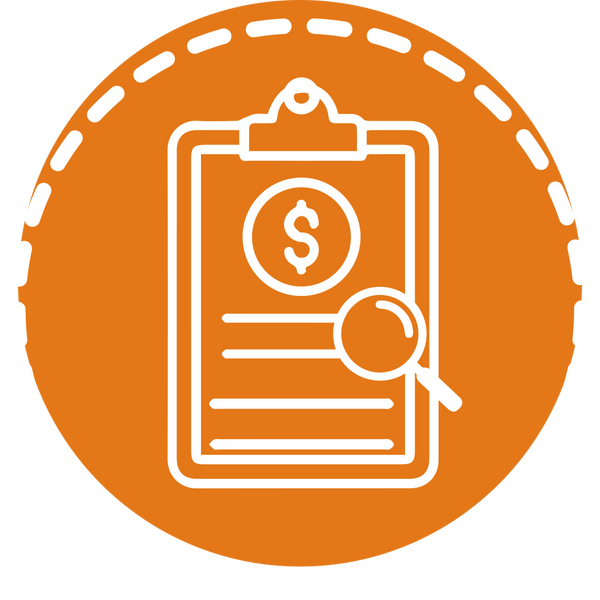
How Hands-On STEM Transforms Classroom Instruction
If there were any doubts that educators were resilient, pandemic teaching squashed them. Still, hunched over your blank lesson planner, the thought of tackling this year’s unique challenges seems daunting. But don’t crawl under your desk just yet. Perhaps you’ve thought about trying it for years, but now is the time to start. Get ready to embrace the transformative educational movement known as STEM instruction.
No matter the grade level or complex concepts you teach, present your learners with a hands-on challenge and watch their minds unlock a world of possibilities. STEM activities bring life and excitement back into the classroom. And after a year spent isolated and overwhelmed, teamwork and flexibility are just what the doctor ordered.
Wondering how to support all learners through enriched, hands-on instruction? It’s time to bring STEM education into your classroom.
The Benefit of Hands-On Learning in the Classroom
Which left a lasting impression on you — reading about teaching in a university course or interacting with learners? Active participants not only enjoy what they’re doing but often remember more about the experience years later.
Hands-on means minds-on. Thinking critically about the task, learners take an active role in planting deep-rooted connections they can harvest minutes, months, or millennia later (OK, years later).
What types of connections do learners make when engaged in STEM lessons? Three come to mind:
- Cross-curricular
- Learner to learner
- Classroom to real-world
These must be embedded into daily classroom instruction. Why? They’re critical in helping learners take their understanding far beyond the classroom. STEM implements these important connections simply. All it takes is a decision to allow learners to explore.
Let’s delve into the advantages of each connection established through hands-on STEM instruction.
Cross-Curricular Connections
The COVID-19 learning loss is lingering. But fear not! Just one STEM activity connects standards from several subjects and meets the varying needs of all learners in your classroom.
As you know, STEM stands for Science, Technology, Engineering, and Mathematics. The arts were added to the mix recently as well. Integrating multiple disciplines, rather than teaching them in isolation as is traditionally done, has several benefits.
1. Learners Value Content More When Subjects are Integrated
Cross-curricular connections are a great subject equalizer. We’ve all met the learner who insists they “hate” a core subject. But when they see how that content supports a topic they enjoy, their mindset often changes.
For example, writing is relevant when connected to a learner’s theory about why the spaghetti bridge his team engineered withstood the weight of five textbooks. Mathematics is engaging when his class works together to graph the load each team’s bridge held. Connected content gives typically isolated subjects a purpose and is, therefore, more valued.
2. Combining Subjects Saves Time
Lessons that connect various core subjects save time. As in the spaghetti bridge example above, the educator facilitating the engineering lesson is simultaneously teaching expository writing and graphing within one activity. The alternative? Spend several 40 minute periods on bridge types, essay writing, and histograms. Which would you prefer?
It’s worth noting that combining subjects is easily managed because STEM instruction is student-led. In other words, learners work collaboratively to solve a problem with support from an educator, not constant direct instruction. This opens the door for plenty of one-on-one and small group discussions as needed, allowing discovery to continue among the rest of the class. This teaching style leads us to yet another benefit — differentiated instruction.
3. Cross-curricular Extensions Make Differentiation Simple
STEM instruction aims to find that perfect blend of challenge and success for all. A broad spectrum of academics within a lesson allows learners to showcase their strengths while receiving support in subjects in which they struggle.
To help learners take on STEM challenges with confidence, PCS Edventures programs feature a wide range of discussion questions and lesson extensions that help you meet learners where they are in their academic journey.
When you draw connections between subjects, you not only open the door to teaching multiple standards simultaneously, but you help learners better understand complex, abstract concepts in unique ways.
Learner to Learner Connections
We’ve tackled one part of the 2020 learning loss by connecting multiple standards within STEM, but it’s not all academic. Perhaps more pressing than ever, educators must meet learners’ social-emotional needs.
STEM puts learners in the driver’s seat by encouraging them to share thoughts and ideas. Discussions and questioning are at the heart of every hands-on experience, making relationship skills and social awareness imperative.
Since in-person interactions were rare last year, many learners need more support than usual to feel comfortable working closely with others. How can you help?

Start the year off with a fun, collaborative STEM classroom icebreaker that encourages a social mindset. This activity gets learners talking as they interview classmates and discover shared personalities, hobbies, and interests. They explore how understanding what makes people unique can help form lasting connections among new friends.
If you set the expectation for collaborative learning right from the get-go, you are going to see your learners rise to the challenge throughout the school year.
Classroom to Real-World Connections
Anyone who taught during the pandemic knows that resilience and problem-solving are vital life skills. Luckily, STEM is the superior instructional strategy for providing learners with such experiences in a safe and encouraging environment — your classroom.
Collaborative, hands-on activities prepare learners for the real world. The following are just some of the skills nearly every STEM lesson possesses.
- Critical thinking
- Resilience
- Communication
- Teamwork
- Innovation
- Emotional intelligence
- Self-directed learning
- Informed citizenship
- Problem-solving
- Flexibility
Practicing these skills in the classroom leads to greater application later in life. STEM prepares learners to be compassionate, knowledgeable, and career-ready.

Speaking of career-ready, if technology wasn’t already a key player in the workplace, it certainly is now. STEM instruction deliberately infuses technology into daily lessons. Discover Digital Video LAB invites learners to navigate tablets by recording and editing videos that illustrate their STEM explorations. These types of hands-on activities equip learners for the ever-changing modern world of tech.
View Discover Digital Video LAB
Welcome STEM Instruction into Your Classroom
It’s undeniable that hands-on activities in the classroom elevate instruction and leave a lasting impact on learners. Following a year of virtual learning, your learners crave experiences that deeply connect them to content, each other, and the world. Get started and fill your lesson planner with STEM activities that meet the demand and bring learning to the next level.
What benefits of STEM have you seen?
Have you already implemented one or more STEM subjects into your learning environment? What effects did you notice? Do you have any advice for educators who are new to STEM? Share your experiences by leaving a comment below!

Author: Jessica Ventre
An experienced elementary educator and science instructional coach, Jessica’s passion for STEM instruction and student-led learning is always at the forefront of her lessons and professional development workshops.









